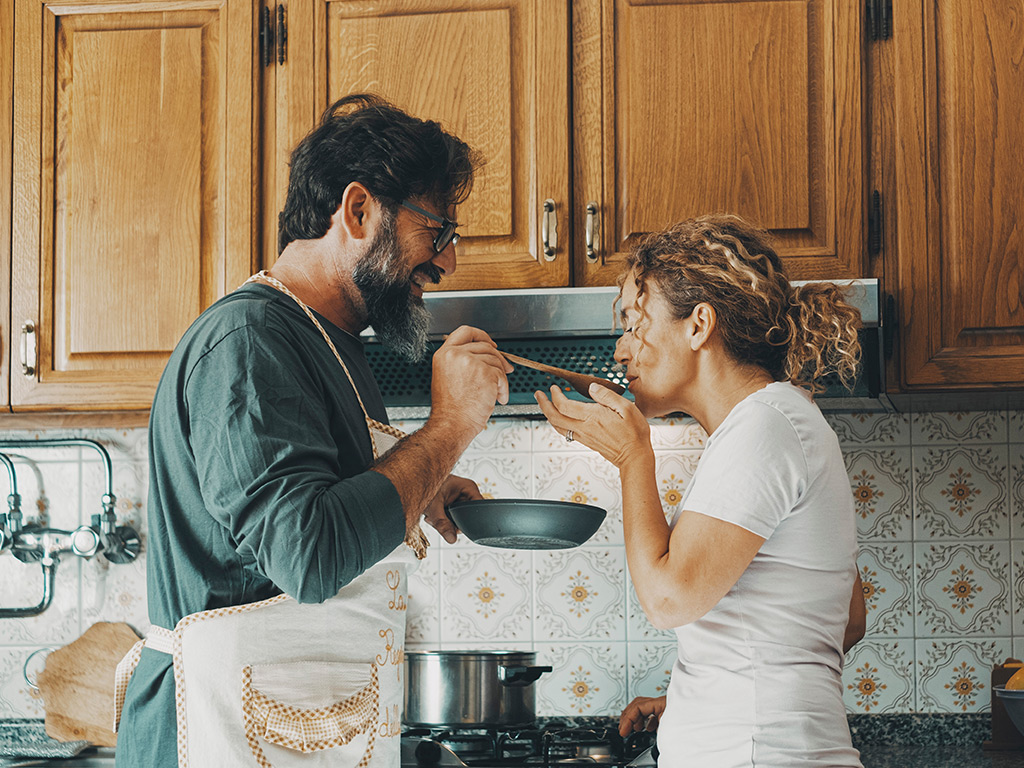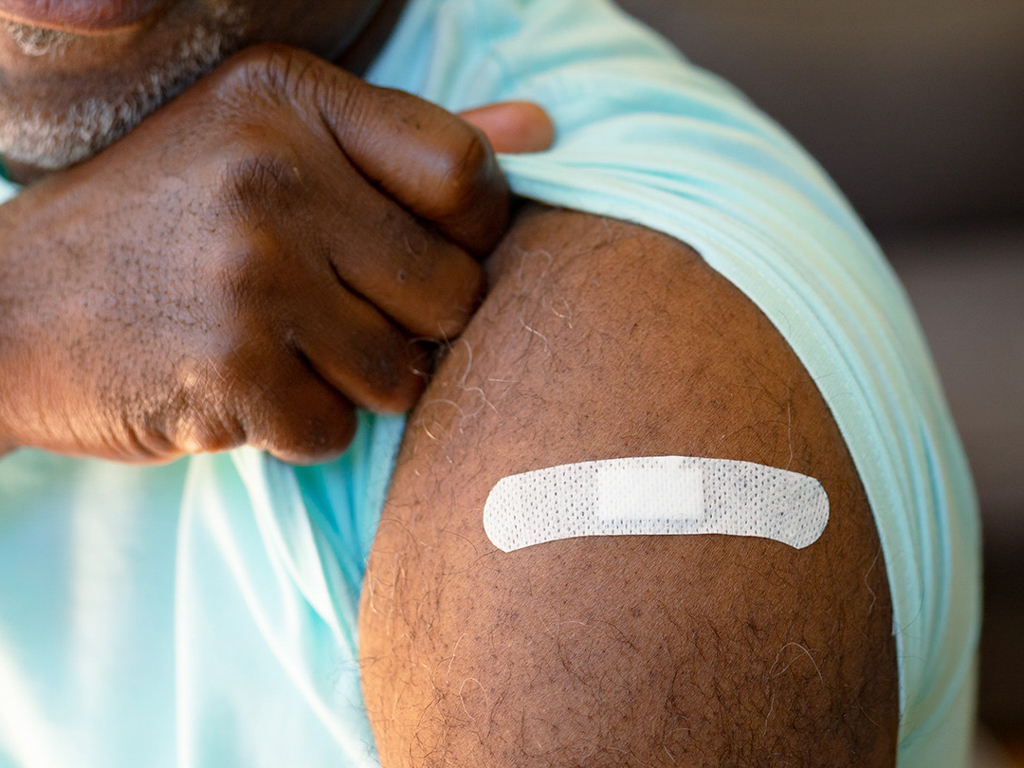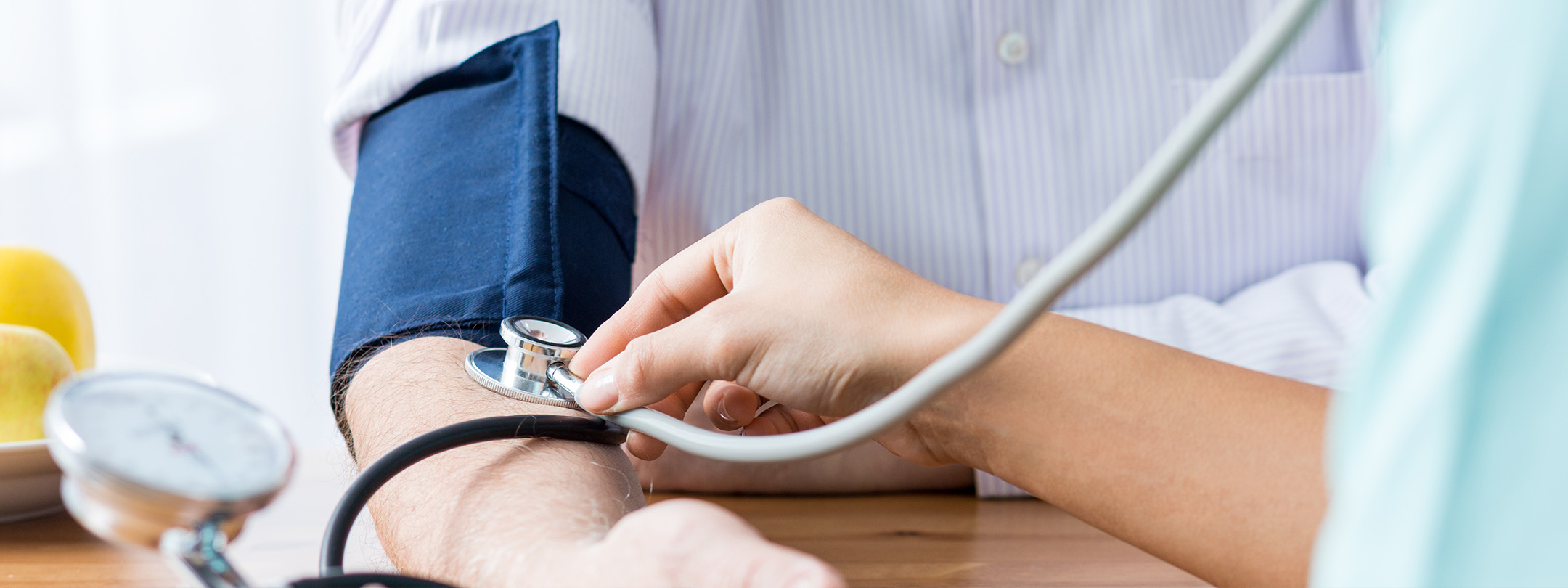WHAT IS HIGH BLOOD PRESSURE?
Blood pressure (BP) is the force of blood against the inside walls of your arteries. When your arteries become narrow, the pressure of the blood goes up. This causes high blood pressure (also called hypertension).
High blood pressure can damage your arteries, reduce blood flow to your organs, and make your heart work harder. If not controlled, it can lead to heart disease, stroke, kidney disease, blindness, and other health problems.
HOW IS IT DIAGNOSED?
To measure your blood pressure, your doctor will wrap a special cuff around your arm. The cuff is attached to a machine or gauge. When the cuff is inflated, it measures the pressure in your blood vessels in millimeters of mercury (mmHg).
Blood pressure is measured with 2 numbers, for example, “120 over 80” (written as 120 / 80). The first number is your systolic pressure (when your heart beats). The second number is your diastolic pressure (when your heart rests between beats). The table below shows the numbers for normal, elevated, and stage 1 and 2 for high blood pressure.
Your doctor will check your blood pressure several times to determine if you have high blood pressure on a regular basis.
BP Category | Systolic / Diastolic |
Normal | Less than 120 and less than 80 |
Elevated | 120 to 129 and less than 80 |
Stage 1 High | 130 to 139 or 80 to 89 |
Stage 2 High | 140 or higher or 90 or higher |
WHAT CAUSES IT?
Most commonly, high blood pressure develops a little at a time over many years. Certain things can increase your risk for high blood pressure. These are called risk factors.
Risk factors you can change:
- Physical inactivity
- Being overweight or obese
- Diet
- Smoking and tobacco use
- Stress
- Use of birth control pills
Risk factors you cannot change:
- Family history
- Age: Risk increases as you age
- Race: Risk increases in African Americans
WHAT ARE THE SYMPTOMS?
Rarely, people with high blood pressure may have dizziness, headaches, or nose bleeds. However, most people don’t have any signs or symptoms. For this reason, you should have your blood pressure checked regularly, even if you’re feeling fine.
MANAGE YOUR BP WITH MAWDS
“MAWDS” is a word that can help you manage your risk factors and your blood pressure. It means:
- Medication – Take your medication as prescribed by your doctor, even if you feel fine. Even if you've reached a blood pressure goal, you may not be able to maintain that level without medication.
- Activity – Staying active every day is one of the best ways to control your blood pressure. People who are active cut their risk of getting blood pressure in half.
- Weight – Maintaining a healthy weight can lower your risk of high blood pressure— losing even 5-10% of your current weight can reduce your risk.
- Diet – Eating a healthy diet can lower your blood pressure. This includes eating fewer high-sodium foods and including more fruits, vegetables, and whole grains into your daily meals.
- Smoking and Stress – Tobacco harms your arteries and increases blood pressure. Stress over many months and years can also hurt your body. Quitting smoking and learning to reduce stress can lower your blood pressure and improve your overall health.
While you’re here, check out our other articles on healthy living. For information on our medical and dental plans, visit selecthealth.org/plans.
Related Articles



